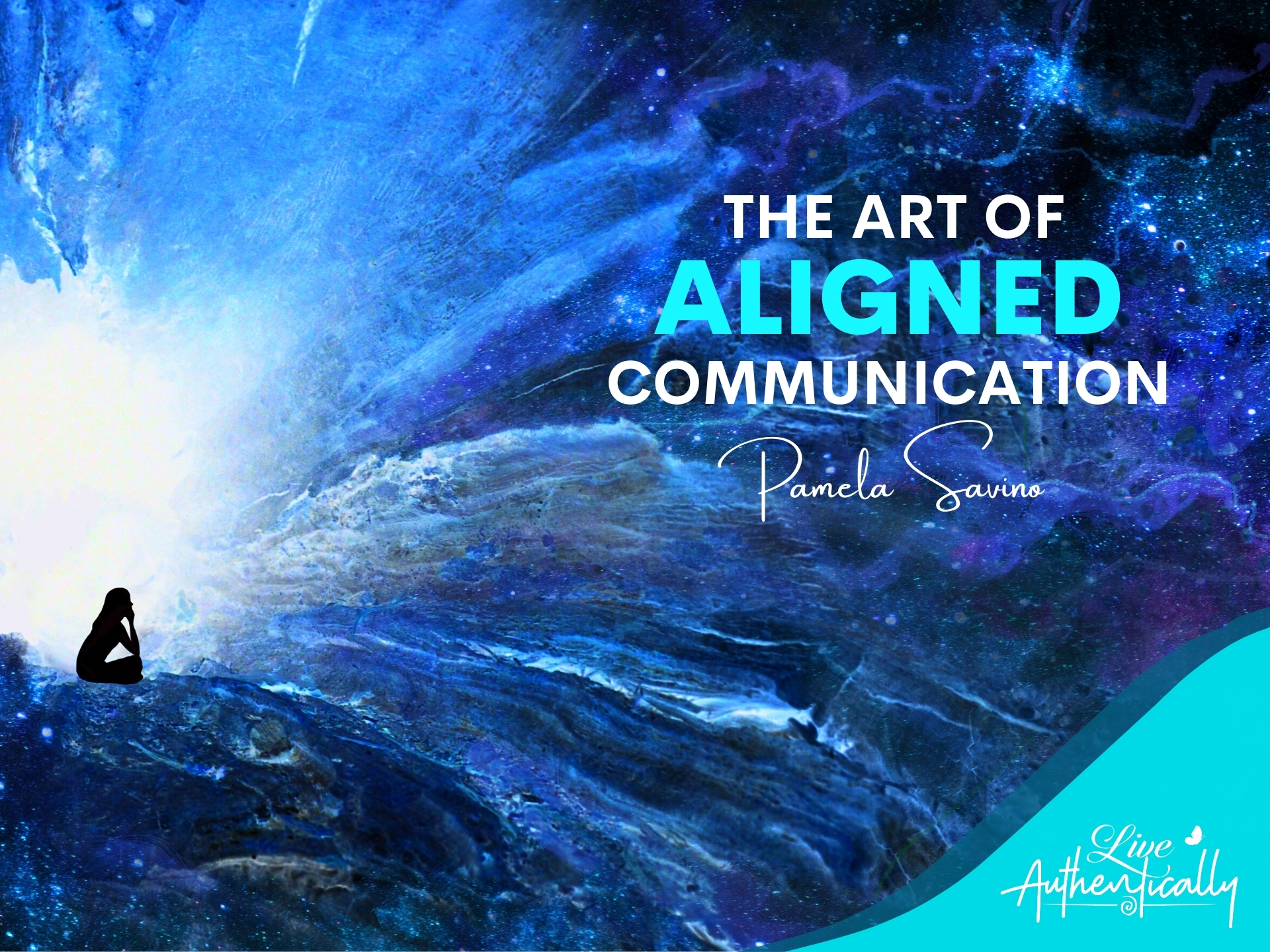Communication. It’s something we all do in some way, shape, or form every single day, but is it as connected, intentional, and meaningful as it could be?
Learning to communicate in a way that honors who we are is a big piece of the spiritual journey.
I believe that there is no more powerful portal to our evolution than the power of a super deep, connected conversation.
By mindfully incorporating various dimensions into your conversations, you can set the tone for a deep, connected conversation that fuels growth and transformation.
In this article, I’m giving you six ways to embrace the art of aligned communication.
1.) Listen Actively
When we hear the word communication, we often think of the “outbound”… how we convey our message to others. But did you know that listening is actually the most important part of communication?
The vast majority of communication happens nonverbally, so pay attention to the cues you receive and send. Listening isn’t limited just to the words we hear. It involves taking in the whole experience by paying attention to the way someone is positioned, eye contact, what emotion they are conveying, and the inflection in their voice.
Really try to focus on every word the other person is saying and hook into the emotion. What do you notice about their body language? What do you notice about their eye contact? What do you notice about their voice inflection? What do you pick up energetically? How does the message make you feel?
Be fully present in the conversation by giving the other person your undivided, undistracted attention. While someone else is talking, we may find ourselves starting to formulate our response. Instead of thinking about what you’re going to say, really try to step into the person’s human experience and show empathy and compassion. Seek first to understand and then respond consciously, as described in the next section.
2.) Respond Consciously
As you read in the prior section, there is a lot to take in while another person is speaking. Give yourself a moment to metabolize all of the messaging, and take a moment to pause and take a deep breath before responding. There’s no rush to respond. Give yourself the grace and the space to respond from a non-judgemental place. Depending on the topic, your response may begin by reflecting on what you heard. For example, “What I hear you saying is …”.
3.) State Your Intention
That is a super powerful step and often shifts the other person into a place of being more receptive to your message. When someone is putting a lot of self-judgment or self-critiquing, they may run the risk of interpreting your response through that filter as well.
Consider stating your intention. Here are a few examples:
“My intent here is to help you.”
“I’d like to help you make the best choice for yourself.”
“I’m not here to judge or critique you. I’m just trying to help you see this from a different perspective.”
4.) Use “I feel …” Statements
How many times have you started a conversation pointing out what the other person did wrong? I know I’ve been guilty as charged here in the past, that’s for sure. Based on experience, not exactly the best way to kick off a conversation.
When someone feels like they are being blamed, it automatically puts them on the defensive. They shift into trying to protect and defend themselves and often close up.
There is a better way, and this is where “I feel” statements come in.
“I feel” statements are a total game-changer. They encourage us to take responsibility for our own feelings and focus on the solution rather than the source of the problem.
Here are a few examples:
“I feel hurt when you say that.”
“I feel like my opinion doesn’t matter to you.”
“I felt lonely when you didn’t pay attention to me.”
Think about real-life experiences you’ve had and how you can reframe them with “I feel” statements.
5.) Embrace Simplicity
The more I evolve, the more I embrace simplicity. When I first started my coaching business, I felt it was necessary to establish myself as the expert and the authority on the content I was presenting, so I used super elaborate words. It totally made me look smart, but I didn’t connect with my audience effectively because I wasn’t speaking their language.
Nobody wants to feel like they need to get the dictionary out to interpret a message. Use simple, brief language. Get your point across in as few words as possible, and make them super-effective and impactful.
6.) Be Vulnerable
I thought I’d save the hardest for last. I haven’t met anybody yet who thinks being vulnerable is easy. Vulnerability takes a lot of courage and puts ourselves out there in a way that no other aspect of communication does. It exposes us in a way that may make us feel uncomfortable, but that’s precisely the fertile ground necessary for our expansion. How can you be more vulnerable in your life?
So, there you have it. Six ways to make your communication more effective, connected and aligned. I hope this serves you well.
Have a wonderful week!
